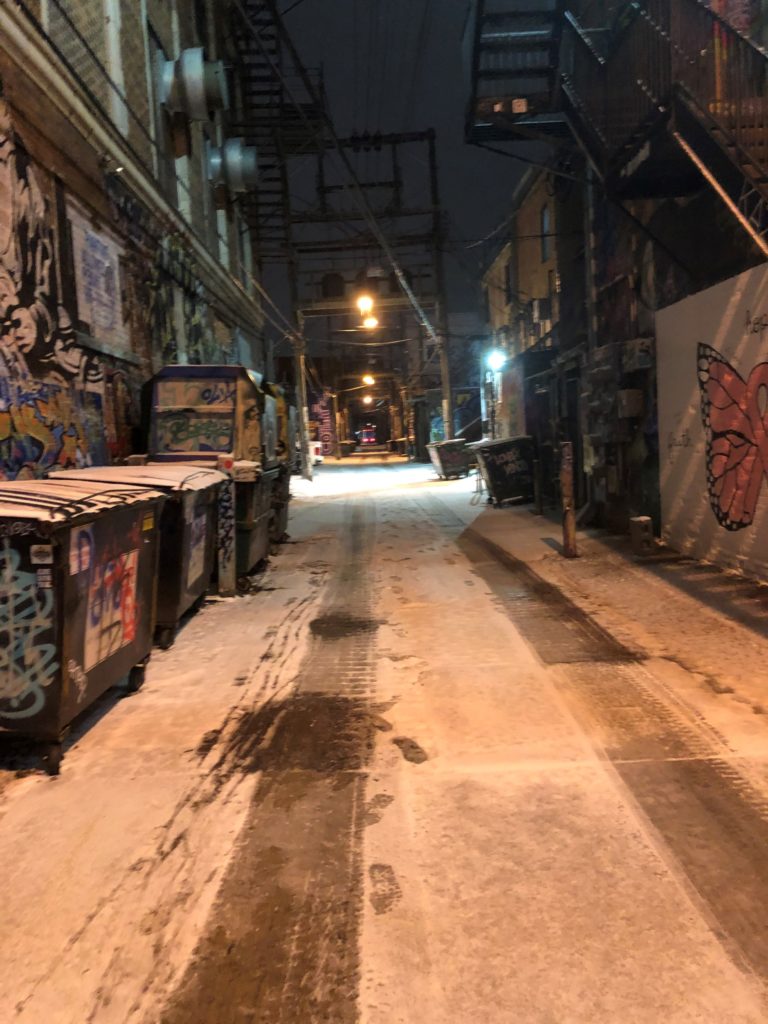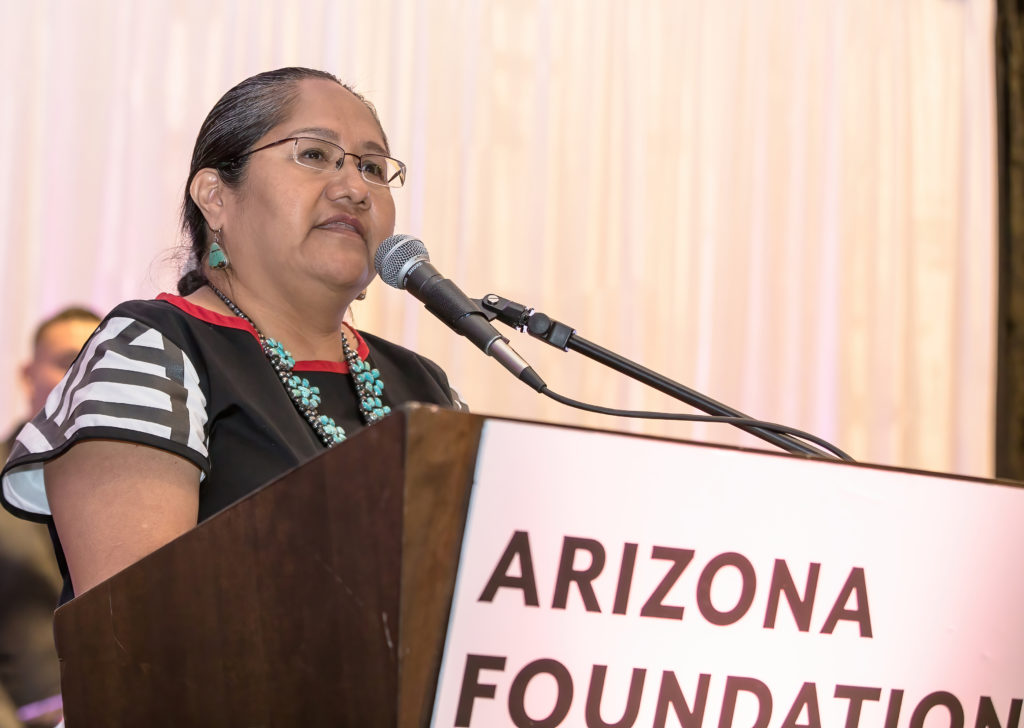An Interview with Debbie Nez-Manuel
84% of Native American women experience violence in their lifetime, facing murder rates at almost three times that of White women. Some are domestic violence cases where women suffer at the hands of a partner; others are targeted by strangers. Some women simply disappear. Many people have heard of the Highway of Tears, a remote stretch of Highway 16 where an alarming number of Indigenous people go missing or are murdered. These crimes often go uninvestigated and many remain unsolved. Collectively, we call this phenomenon Missing and Murdered Indigenous Women (MMIW).
Recently we talked to Debbie Nez-Manuel, a social worker, community leader and activist who leads MMIW mobilization in Arizona. Nez-Manuel sees an opportunity for healthcare workers to play a bigger role in prevention, education, and intervention. “MMIW should be a prioritized health issue,” she says. “Lives are ending. People immediately associate it with protection and safety but it is very much a health issue, like suicide.”
Raised on the Navajo Nation in northern Arizona, today Nez-Manuel is based in the Phoenix metro area. She was instrumental in the unanimous passage of HB 2570, which established a committee on Missing and Murdered Indigenous Women and Girls. The bill was the first of its kind in the nation – and in January 2020, Nez-Manuel became the Arizona Democratic Party’s first Indigenous National Committee Person.
Nez-Manuel has a personal connection to MMIW that has fueled her groundbreaking achievements. Here’s her story.
Debbie, how did you get started in this work?
It goes back to when I was 3. My father had taken our family truck in a border town of Navajo Nation and my mother needed it to get to work on Monday. So she set out on foot to look for my father, leaving my two brothers and I with her younger sister. She never came home. A week later, her remains were found in the border town. She had been sexually assaulted and left to die, with four sets of footprints around her. She was brought home to our community to be buried.
As a child of a mother who went missing, it’s hard to grasp the circumstances when you’re young. But then you become a young woman and you’re looking for a mother’s guidance to raise your own children. I learned it’s a serious issue, that young women everywhere go missing – and when I heard a legislator put a bill together, I thought, “This is what happened to my mother.” My three daughters are involved as well. They know their grandmother died this way. We can’t overlook it or say, “This happened to someone else.” We’re caught in the middle of it.
How did it spark your career path?
Because my mother left behind life insurance, several of my relatives were eager to care for my brothers and I to access those funds. We wound up in difficult environments. I found the courage to call CPS and say I didn’t want to go back to a certain relative’s home. I was in a temporary foster home and then a longer-term foster home until I was 18. The woman who heard my plea about not going home, made me realize I could be what she was. She created a shift – and I wanted to be that shift for other children.
I learned about crisis intervention, working with first responders, and that led to clinical counseling, individual and group counseling, and prevention and education. Many tribes couldn’t apply for these opportunities because of the type of crisis they had – but one tribe did and I took advantage of that experience.
At one point, I realized I had done every facet of social work – and that it was time to go into policy work.
In terms of policy and change – what’s needed to improve things for Indigenous women?
Change is happening but slowly. A lot of education is needed. A lot of assumptions get made, but education helps people realize this is an issue. As Native people, we’re missing from mainstream society. Rarely do our issues make the news – which is why having voices like Secretary Deb Haaland include MMIW is so important.
Policies need to be integrated to close the gaps in our system. Existing policies can be improved. Federal funding can support tribes – and state government can help too. Creating a state office is vital. Right now in Arizona, there’s a formal recommendation from the Democratic Party and pending legislation. It’s really up to the governor. We also need an official Arizona office that addresses safety of Native women in Arizona.

What are some of the barriers?
One big misconception is that people think everyone talks to each other. They think all these jurisdictions are efficient and timely. But many Tribal communities don’t have resources to digitize information. There’s often a backlog of paper and pen notes. And in remote geographic areas, it’s hard to follow up and get everyone on the same page.
It’s such a tragedy to look back at failures that have happened. Cohesion and collaboration are important, but tribes haven’t always had the capacity to align services across federal, state, and tribal organizations There are cases where we need to know who was responsible, how we should proceed – but these different areas aren’t talking to each other.
There can be a lack of trust when it comes to trusting systems to address Native issues. Our issues aren’t prioritized; court cases can get backlogged. These systems were developed for western society, so Native people have to get educated about what they are and how to navigate them and push back when they don’t work in our favor. But that can be difficult in Tribal nations that aren’t as advanced or modernized. Some communities seem like they’ll never get the help they need.
How can Tribal and non-Tribal hospitals work with the community and/or law enforcement?
Hospitals can have more community conversations around it. I’ve never seen a hospital make an announcement about MMIW or host an event about it. Bring doctors into the conversation – I’ve never seen doctors on a panel to support the community. I’ve lived in Phoenix for 30 years and never seen it.
How can the healthcare industry help in general?
They can set aside funding for health issues or funding from government. By reclassifying MMIW as a health or safety issue, health sectors can help us secure funding and help our communities keep women safe. For instance, working in Indian Health Service facilities, I know it’s policy to ask patients, “Do you feel safe at home, do you feel a danger to yourself?” We were well trained to ask every patient in terms of self-harm and suicide. That became part of the policy, and that requires funding.
They can educate people about MMIW. So many people don’t know. We have to educate people who are new to this issue, but they may not know how to have that conversation or ask questions. I make it a safe space for asking questions. My advice is, don’t demean them, don’t patronize them. Address myths about Native people. Creating that safe space is a game changer. Then you grow allies. That’s the power of asking questions.

What about your average person? How can they help?
Overall, everyone can help by electing thoughtfully. Funding is one of the biggest sources required for change – and that’s decided by congressional leaders. Who we elect is important.
Donating also helps. It’s important for people to support local MMIW efforts. They are all volunteer, running all on donations – there’s no funding. Everyone serves in different capacities, from boots on the ground education and prevention to tech support. There are days we send letters to the White House, days we send letters to the Governor, and days we work with Tribal Councils. All these MMIW teams are stretched thin. Just donating $25 a month can really help. Make it a habit.
Thank you, Debbie!
Debbie Nez-Manuel can be contacted for training, education, events, and speaking engagements at debbienezmanuel.com. Want to donate to MMIW organizations? Consider one of the following:
Northeast Arizona Native Democrats
Next up: we’ll share 8 ways healthcare professionals can play a role in the MMIW movement.

